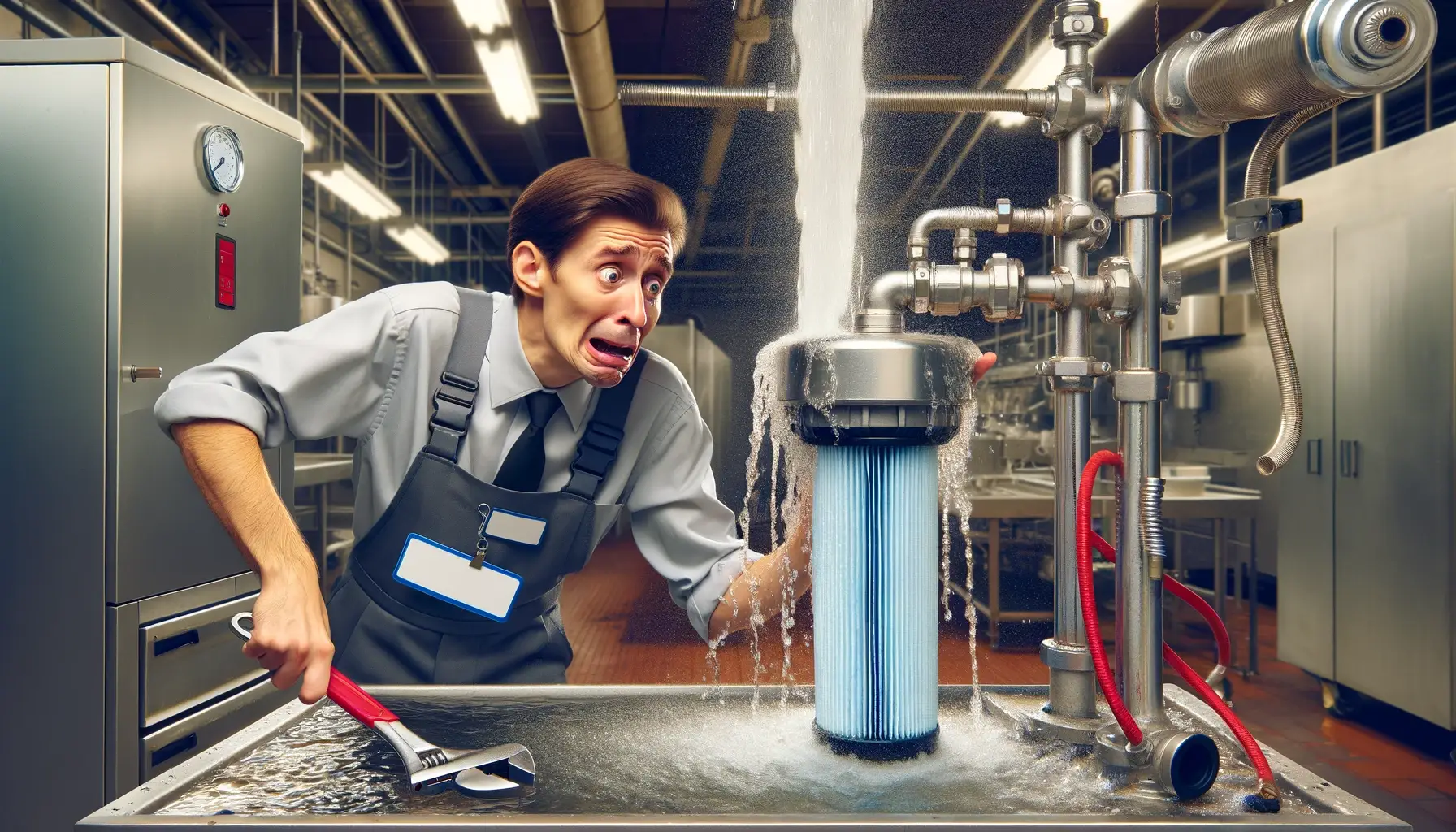Are we really having this discussion? Vodka should be crystal clear, period! Anything else is amateur hour.
Tim Kelly, Master Distiller
There are Flakes Floating in my Vodka, is this OK?
No, calcium flakes are neither acceptable nor normal in commercially available vodka. High-quality vodka should be clear and free of any impurities, including mineral deposits and calcium flakes. The presence of such flakes typically indicates issues with the water source or filtration process used in the distillation and bottling of the vodka. Reputable vodka producers ensure that their filtration processes remove minerals and other impurities to maintain the clarity and purity of the spirit.

The vodka industry is often shrouded in myths and misconceptions, especially regarding the purity and quality of the final product. A frequent concern among consumers involves the presence of visible mineral deposits, such as calcium flakes, in vodka. Such occurrences can raise doubts about the quality and safety of the spirit. This article aims to demystify the issue, drawing on authoritative sources, including insights from Difford’s Guide, a respected resource in the beverage industry.
Understanding Mineral Deposits in Vodka
Mineral deposits in vodka typically manifest as small flakes or crystals, often derived from calcium. These impurities can form during the distillation process or arise from the water used in vodka production. While minerals are naturally present in water, their visibility in the final product is generally a sign of insufficient filtration or improper handling during production.
“Stabilizing and clarifying the mineral composition of water is one of the most basic aspects of distilling,” says Kelly.
Scientific Perspective on Mineral Presence
The appearance of calcium flakes or other mineral deposits in vodka (especially those visible to the eye) is not a normal characteristic of well-produced spirits. Such flakes indicate that the water used in the distilling process was either too hard or not adequately treated before its use. Quality vodka production often involves multiple stages of filtration to remove any potential impurities, ensuring the spirit is crystal clear.
Industry Standards and Expectations
The Crowded Vodka Marketplace: The Rise of Low-Quality Offerings

In recent years, the vodka marketplace has become increasingly saturated. A significant number of low-quality, inexpensive vodka brands have emerged, especially in Colorado. This phenomenon is largely attributed to third- and fourth-party purveyors. These companies often source bulk, commodity corn ethanol, which they subsequently proof, filter, and bottle.
Understanding Third- and Fourth-Party Purveyors
A third-party purveyor purchases bulk ethanol from a broker and handles the proofing, filtering, and bottling themselves. They are essentially the third bonded owners of the spirit. Meanwhile, fourth-party purveyors focus primarily on marketing the brand. Often, these purveyors exert minimal control over the production process. Consequently, the quality of the vodka remains unchecked.
The Issue of Quality Control
The lack of quality control among third and fourth party purveyors is becoming a critical issue. Many do not prioritize quality. For instance, Red Rocks Vodka has been noted for having excessive hard water sediment in its products. Despite attempts to explain this away, such sub-standard distilling and bottling techniques are simply unacceptable.
According to industry experts, including those cited by Difford’s Guide, the presence of visible mineral deposits is widely regarded as unacceptable in premium vodka. The clarity of vodka is one of its defining characteristics, and visible impurities such as calcium flakes compromise both the appearance and perceived purity of the product.
Debunking Myths: Are Mineral Deposits Harmful?
While mineral deposits in vodka do not typically pose health risks, their presence can affect the taste and overall aesthetic of the spirit. Consumers associate clear, pure vodka with quality, and visible impurities contradict these expectations. Therefore, it is crucial for vodka producers to employ rigorous filtration techniques to prevent such issues.
Quality Statement on Vodka Purity
The presence of large, visible flakes in vodka should not be considered acceptable or normal. Such occurrences reflect a lapse in the meticulous production and filtration standards required for high-quality vodka. Brands that allow these impurities in their products are not adhering to the high standards that knowledgeable consumers expect from premium vodka.
The Great Sediment Scandal: Mocking Mediocrity in Vodka Production
The idea that sediment in vodka is acceptable is creeping into consumer culture, much like the unwelcome sediment itself. This section explicitly indicts the burgeoning trend where brand owners, with no distilling expertise, attempt to normalize what essentially amounts to bathtub alcohol.
The Uninformed Brand Owners’ Bold Claim

In an audacious display of ignorance, certain brand owners—those who could not differentiate between vodka distillation and making instant coffee—have decided that vodka sediment is a feature, not a bug. With no clear understanding of the intricate processes involved in crafting fine spirits, they insist, against all traditional wisdom, that these impurities are beneficial.
The Ridiculousness of Celebrating Sediment
Imagine if, one fine day, winemakers began to tout the virtues of corked wine, or if bakers sold half-baked bread as a new delicacy. This is the level of absurdity we face in the vodka industry today. Sediment in vodka, we are told, is a mark of authenticity, a throwback to the good old days of speakeasies and moonshine. It’s as if these brand owners are handing out participation trophies for simply bottling a spirit, regardless of its clarity or purity.
A Satirical Take on Subpar Standards
It seems that we live in an era where effort alone is enough to warrant applause. Just as children are awarded for just showing up, these brand owners expect accolades for their sediment-speckled spirits. “Look,” they seem to say, “we’ve managed to bottle something vaguely alcoholic. Isn’t it grand?” It’s a preposterous notion that flouts centuries of distilling tradition in favor of a misguided embrace of mediocrity.
Rejecting the Ridiculous
It is high time that consumers and connoisseurs alike reject this ludicrous trend. Sediment in vodka is not a quirky, charming feature; it is a clear sign of poor craftsmanship and a fundamental misunderstanding of distillation. We must demand more from those who make and market our spirits. After all, settling for sediment-laden vodka isn’t just about compromising on quality—it’s about condoning a culture of low standards and celebrating mediocrity as if it were a virtue. Let’s not award participation trophies where mastery should be the only standard.
The Takeaway
The presence of mineral deposits, particularly calcium flakes, in vodka is a clear indicator of substandard production practices. It is imperative for vodka producers to maintain rigorous filtration standards to ensure their spirits are free of any visible impurities. By doing so, they uphold the purity of vodka and meet the expectations of consumers seeking a high-quality product.
- Top 5 Sports Betting Strategies Used by Sharp Players - October 21, 2024
- Colorado’s Favorite Vodka: Profiling Felene Organic Sugarcane Vodka - May 17, 2024
- Clarifying the Waters: The Truth About Mineral Deposits in Vodka - May 9, 2024










